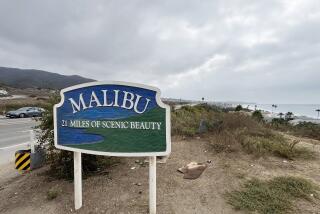Science / Medicine : Central U.S. Warned to Gird for Major Quake by 2030
- Share via
Memphis, Nashville and St. Louis are vulnerable to an earthquake more powerful than the temblor that rocked and ravaged the San Francisco Bay Area last month, scientists told Congress recently.
The New Madrid, Mo., Fault, within easy striking distance of these and other cities, spawned quakes in excess of magnitude 8.0 in 1811 and 1812, forming lakes, altering the path of the mighty Mississippi River and ringing church bells in Boston.
The Oct. 17 California quake measured magnitude 7.1, and communities in the Central United States are being urged to retrofit bridges and buildings for quakes and revise construction codes.
“A repeat of the 1811-12 historic earthquakes . . . could cause extensive destruction throughout the Central United States,” Dallas Peck, director of the U.S. Geological Survey, told a joint hearing of House science subcommittees.
“The impact would be devastating because of the large population, about 33 million, within the epicentral region, encompassing seven states--Missouri, Arkansas, Mississippi, Tennessee, Kentucky, Indiana and Illinois,” Peck said.
“Building losses from ground shaking alone are estimated to run to many billions of dollars,” Peck said. “Much of the damage would be to the urban infrastructure, including bridges, highways, pipelines, etc., in such cities as Memphis, St. Louis and Nashville, where many structures do not meet current standards for earthquake-resistant design.”
Rep. John Tanner (D-Tenn.) said earthquake experts believe there is a 97% chance of the New Madrid Fault unleashing killer shock waves--in the range of magnitude 8.0--by the year 2030.
“Failure of bridges that cross the Mississippi River could hamper east-west ground transportation and cause disruption in river traffic,” Tanner said. “Pipelines carrying natural gas supplies to the Northeast and Midwest cross the river . . . creating more potential for an earthquake disaster with national implications.”
Rep. Robert A. Roe (D-N.J.), citing the death and destruction in California said, “Imagine . . . what would happen if a shock wave with 30 times that energy were to strike Memphis.”
Although Memphis officials are taking steps to prepare their city for a major earthquake, there are geological hazards that make their job extremely difficult--if not impossible.
In testimony, Arch Johnston, director of the Center for Earthquake Research and Information at Memphis State University, said, “All Memphis construction is on soil, not rock”--lacking critical natural support.
Much of the destruction in California occurred through liquefaction of such loosely packed soil, turning the ground into “instant quicksand” that caused foundations, walls and roadways to buckle and crack.
Additionally, “seismic waves maintain their strength to greater distances in the Central United States than in California,” he said.
But taking a bit of a differing view, Johnston said that in his opinion, “although Memphis and the adjacent Mid-South region has the highest seismic hazard of any large city east of the Rocky Mountains, it is a moderate hazard compared to regions within the Western states of California, Nevada, Utah, Washington and Oregon.”
More to Read
Sign up for Essential California
The most important California stories and recommendations in your inbox every morning.
You may occasionally receive promotional content from the Los Angeles Times.













